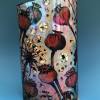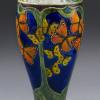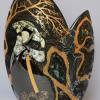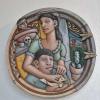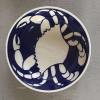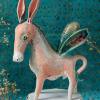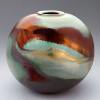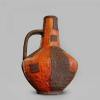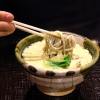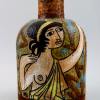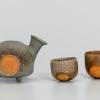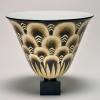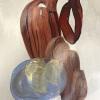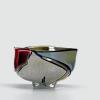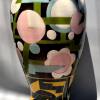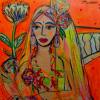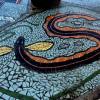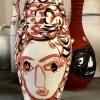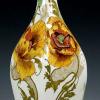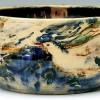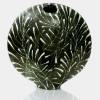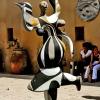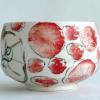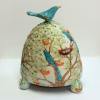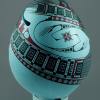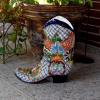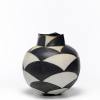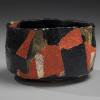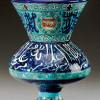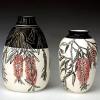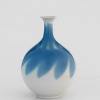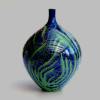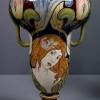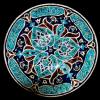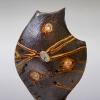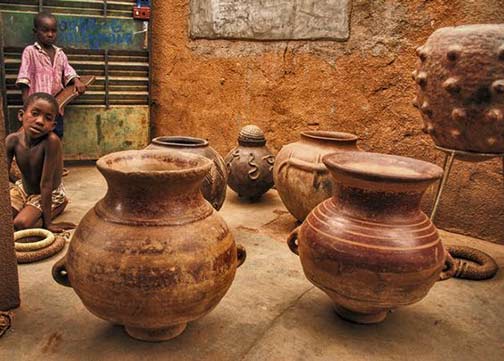
Selection of African tribal pottery from differnet tribes, Burkina Faso
Pottery diversity of Africa
The vast African continent contains an extreme diversity of cultures, countries and terrains. This has had a critical influence on the styles and techniques that are employed to create their pottery wares. One of the constants in their traditional pottery production is that they are usually hand crafted without the use of a wheel, utilizing coiling and molding techniques and their methods have been passed down through generations. Terracotta clay is most commonly used, fired in the open, to produce pots of remarkable durability. Their pottery wares embody a refined understanding of material, process, and embellishment that conjures a deceptive simplicity.
Many superstitions and rituals are present in their pottery exploits, where in some tribes, only the woman are allowed to make the pottery, while in others it is only the men. In some cultures there had to be a cleansing ritual before any work on pottery can begin, and in others, a man wasn’t allowed to be with a woman the night before he intended to create pottery, or a menstruating woman wasn’t allowed near the pits.( this is due to it being detrimental to their health at this time). The Bamana perform an initiation for learning pottery skills that only accepts girls that are virgins and also they have to come from a pottery making lineage.
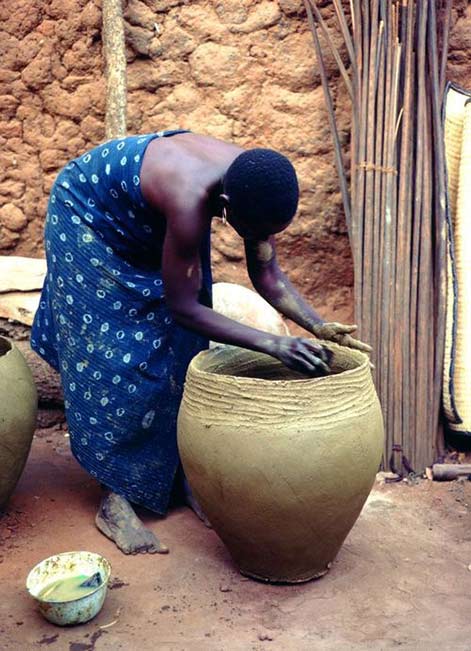
Mali female potter
Somer tribes divide their pots into masculine and feminine shapes. For example the taller, long necked Bamana pots are classified as masculine while the shorter, fuller pots are feminine. The ritual, ceremonial spirit pots usually feature magical, talismanic symbols and/or attached figures. Clay carving, incision and impression are popular decorative techniques and scarification may also be added to a pot, quite often similar to the markings that identify a particular tribe.
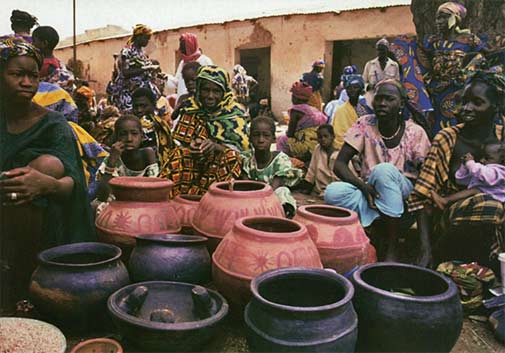
Mali street pottery market
Clay selection
The Ovambo, Kavango and Caprivi tribes in Namibia, use the hardened clay from termite hills, as it contains a glue saliva from the termites. This termite clay makes pots quite strong and helps with the binding of the clay in the formation of the pot. In the rain forest areas of West Africa, where streams and rivers are abundant, clay is usually mined close to existing watercourses and is dug from the banks of streams when the water is low. Enough clay is dug while the pits are accessible to keep the potters supplied throughout the rainy season, when the pits are full of water. In the more arid regions, the best time to dig is after the fall harvest and before the beginning of the dry season. The men and women can recognize where the best quality clay is found by the telltale cracks. The men use axes and hoes to dig, up to two meters down, for the purest deposits of clay. They then fill huge basins with clay which is passed to the women at the surface, who distribute the clay equally among themselves. The clay is spread in the sun to dry and stored in large ceramic vessels until the day before the potter intends to use the clay and it is then soaked overnight.
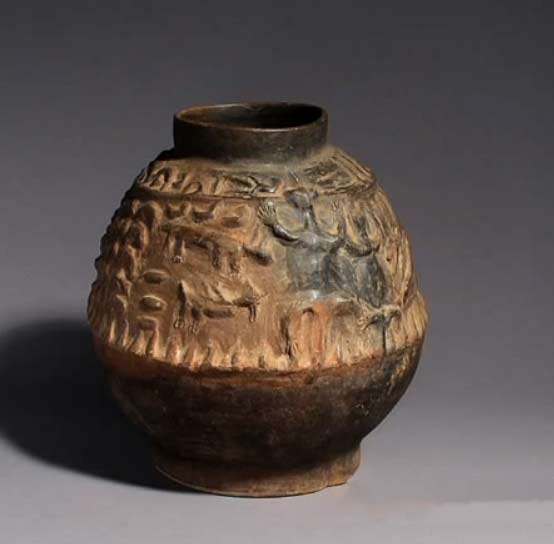
Baatonu shrine pot, Nigeria
Image from the youtube video African Pottery Forming and Firing
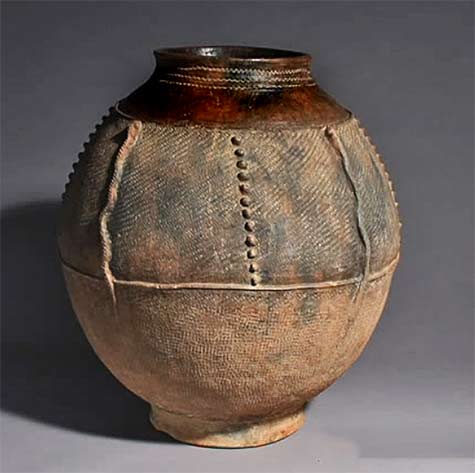
Bamana fabric textural decorated pot, Segou, Mali
Pottery firing
To avoid the pottery cracking, tempers are used consisting of finely chopped straw, dried animal dung pounded into a powder, or the chaff left when rice or millet is winnowed. Also ground-up dried river mud or, most commonly, shards of old pottery are used, after being reduced to a fine powder by pounding in a wooden mortar. The fine grain grog is then added to the clay mixture to prevent excessive shrinkage during firing
After applying decorations, the pots are left in the sun to dry, or if in a place where it rains often, they are placed in a dry hut or room or near a fire to dry. If it is very wet, they are pre-fired, where individual pots are held for a short time over a fire to remove the moisture. Women of the same household often fire together with twenty-five to thirty-five pieces as average per firing. Bamana potters place their large pots upright on a bed of wood during firing and encircle the smaller pots around the larger. Branches are positioned on top of the pile to separate and secure the vessels. Within about an hour of lighting the fire, the women use long wooden poles fitted with iron hooks called wolosow to hook or maneuver the pots from the fire. The women begin with removing the smaller pots and immediately plunge the pots into a special bath that blackens the surface. The process of pulling the pots from the fire takes around one to two hours of intense activity.
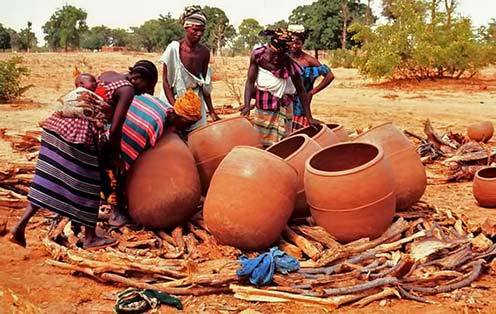
Mali women arranging large pots for firing
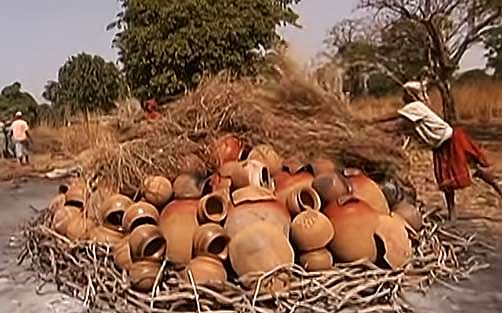
Mali pottery firing
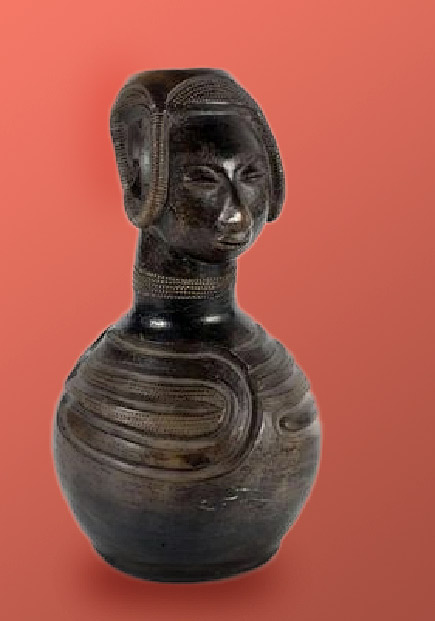
Zande carved earthenware pot from DR Congo Northeast
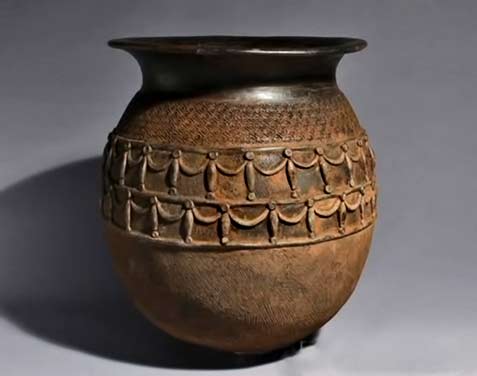
Stylized repetitive figure decoration, Bamileke, Cameroon
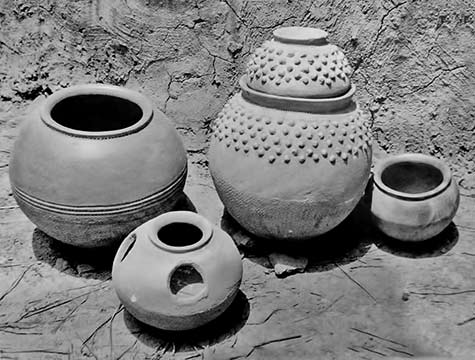
Left to right – Jidaga (water jar). Sheminfaga (chicken watering pot). Bamadaga (“crocodile”/medicine pot; raised nodules warn people not to touch it). Nadaga (small sauce pot) – – Jula potter Awa Kouyatè
African potters create their pots differently depending on the origins of their respective traditions and associated dietary and religious customs and while aesthetically pleasing, they serve primarily as utilitarian.
The Somono Potters make the largest and most diverse selection of pottery consisting of common cooking, serving, and storage pots. They also have a large variety of architectural ceramics – rainspouts, window grills, roof vents and toilet shafts. The Soninke, Bamana and Manika Potters make water jars and pitchers, braziers, couscous steamers, and cooking pots and build large, unfired clay granaries (bono). The Jula have more in common with the Senufo when regarding styles and types. They create dolodagaba vessels, which are 4-5 feet tall and used to brew/store millet beer but are used more now for water and grain storage. They have a bowl Bamadaga “crocodile” pot for storing sacred medicines and a Biyèlè sauce bowl along with a Ngomifaga pancake griddle. The Dogon have a limited range of simple pottery.
Some pottery styles are unique to certain regions, for example the singon is found in Soninke, Bamana, Maninka, Somono, and Fula cultures across the north but it is raely seen in Jula and not at all in Senufo or other potteries to the south or east. Another example, would be the bamadaga, which is found in pottery all across the south from Guinea to Benin, but not seen in the pottery from the north.
Daga: generic term for all pottery, cooking pot
Nadaga: sauce pot
Tobidaga: larger than Nadaga, cooking pot
Nègèdaga: iron pot, metal cooking pot
Nyintin (Basidaga): steaming couscous, smoking pungent locust bean paste (sumbala)
Faga: low, wide, footed bowl, unrestricted rim. washbasin
Sèlidaga: prayer pot
Singon: brazier with 3 prongs extending from the inside of the bowl; it supports a cooking pot
Furuno (Furunè): copy of a metal brazier
Jifinye (Finye): largest vessel currently produced, storage container for water
Jidaga: water jars
Dunden: small, restricted water pot with a short flared neck
Garigulèti: rare, complex and unusual, enclosed water pitcher
Wusulanbèlè: used for incense burning
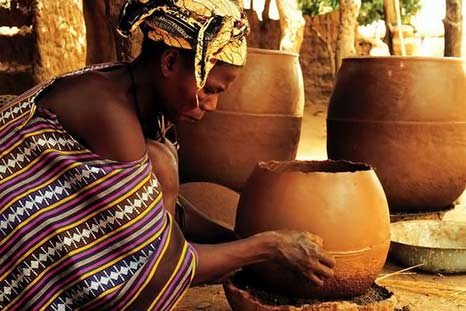
Female Bamana potter
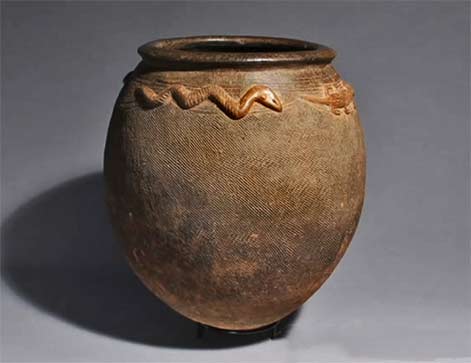
Reptile motif pot from Baule, Ivory Coast
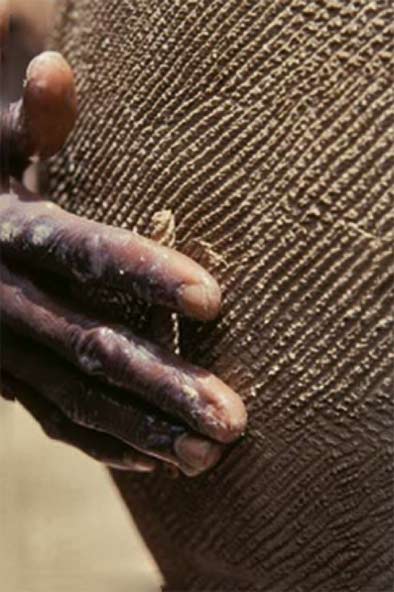
Creating texture with braided fibre, Africa
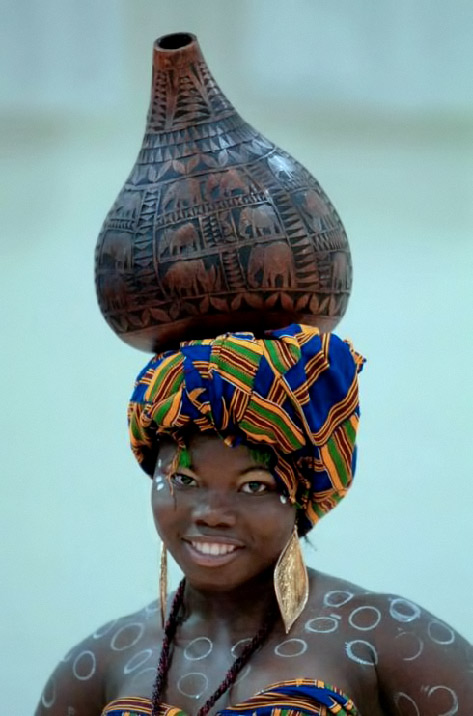
Carved gourd water vessel, Kenya
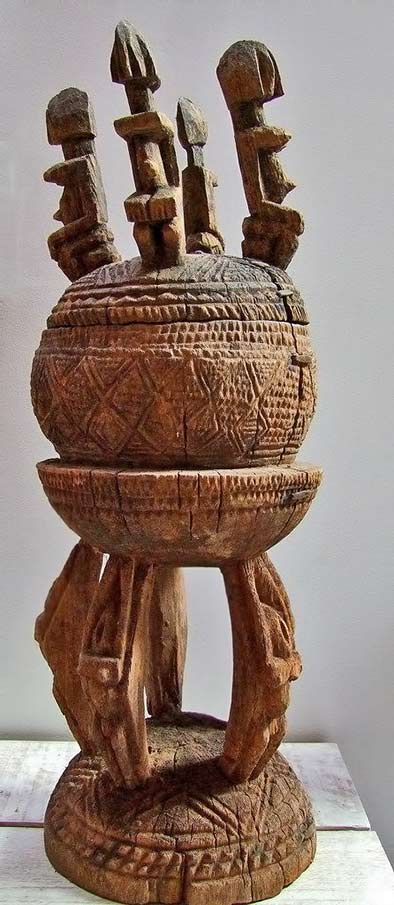
Ceremonial vessel used by the Dogon people to serve food to a Hogon (priest)
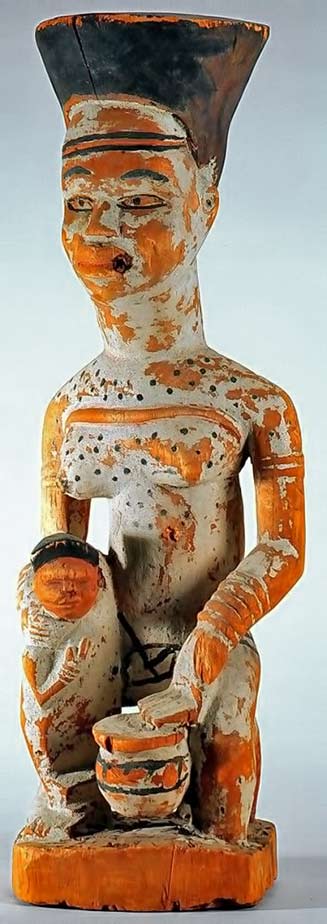
Yombe peoples mother with child sculpture, Republic of Congo
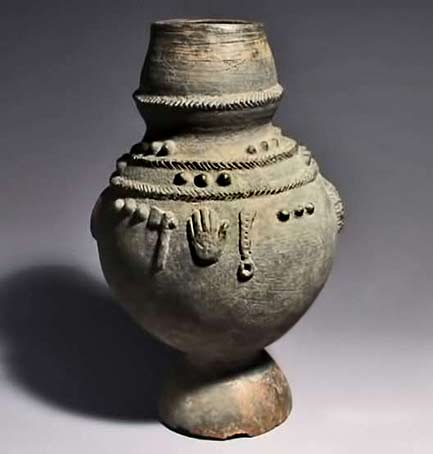
Ritual vessel, Ewe tribe, Togo
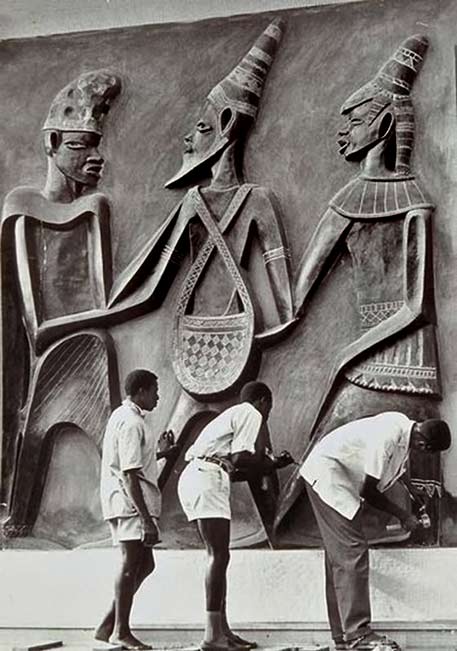
Nigerian sculpture relief, Felix Idubor
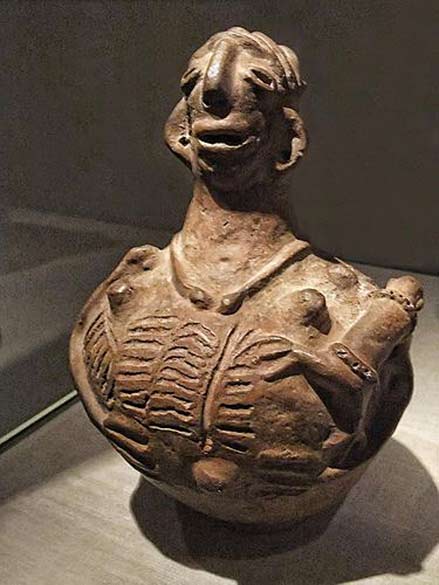
Terracotta Figural Bottle possibly Zela
Republic of Congo
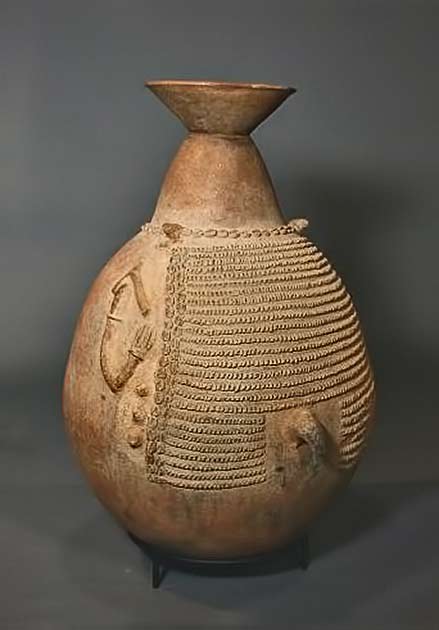
Ceremonial spirit vessel – Bana People
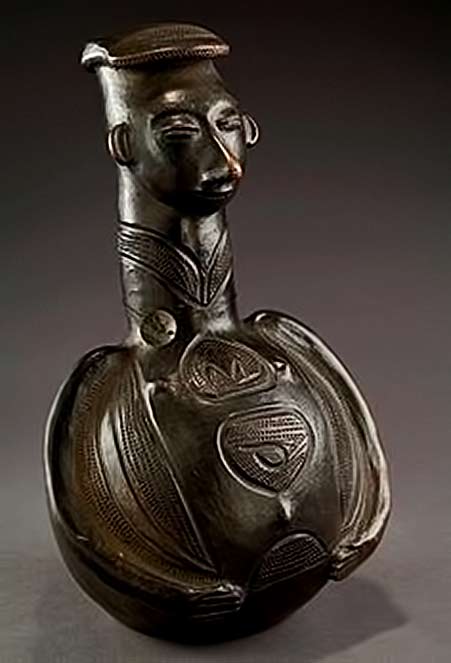
Anthropomorphic globular vessel – Zande Congo
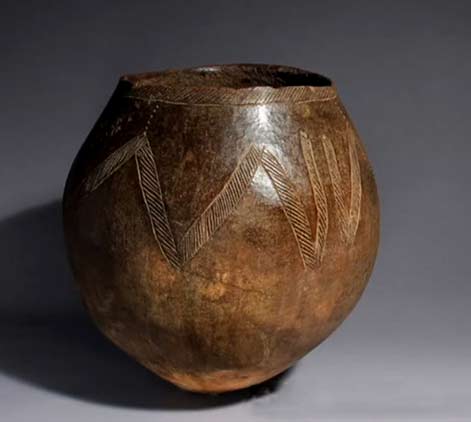
Gurunsi pottery, Burkina Faso

Mali woman forming a pot
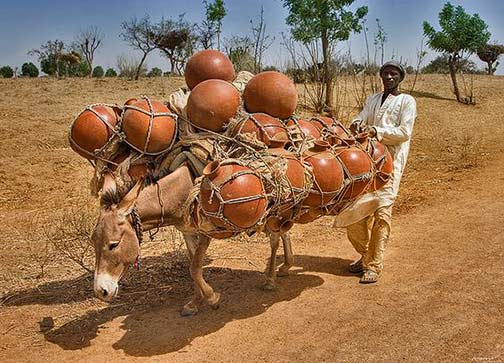
A donkey carrying pottery – Batagarwa, Katsina, Nigeria
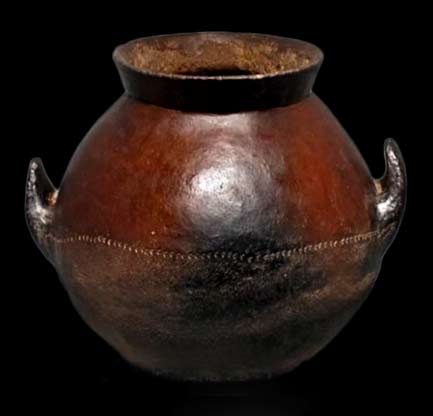
Nuna Peoples pottery vessel, Burkina Faso
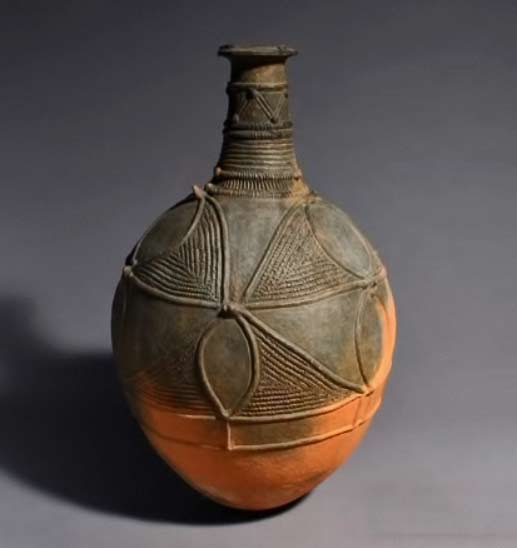
Igbo pot, Nigeria
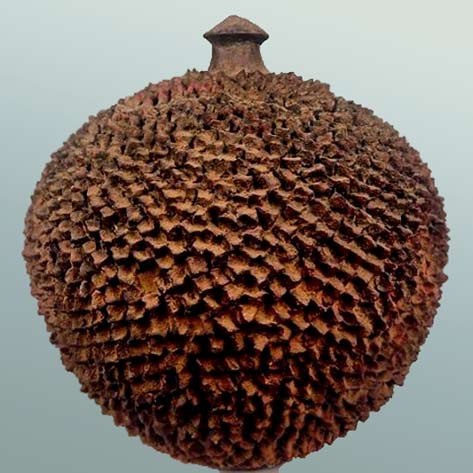
Lobi terracotta storage vessel, Burkina Faso
The rough texture is used to deter children from touching it. Possibly used to store wine or alcoholic beverage.
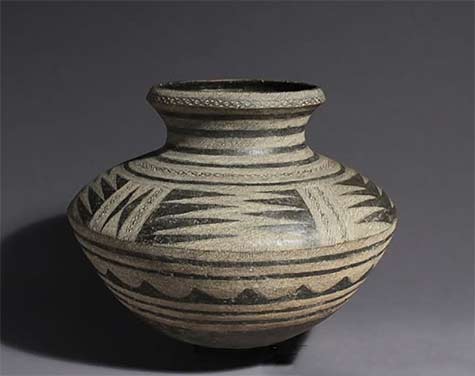
Makonde pot, Tanzania
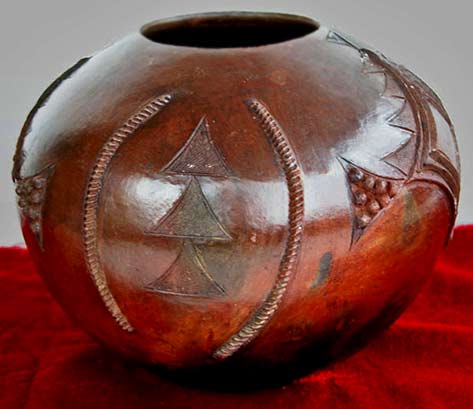
Zulu pot
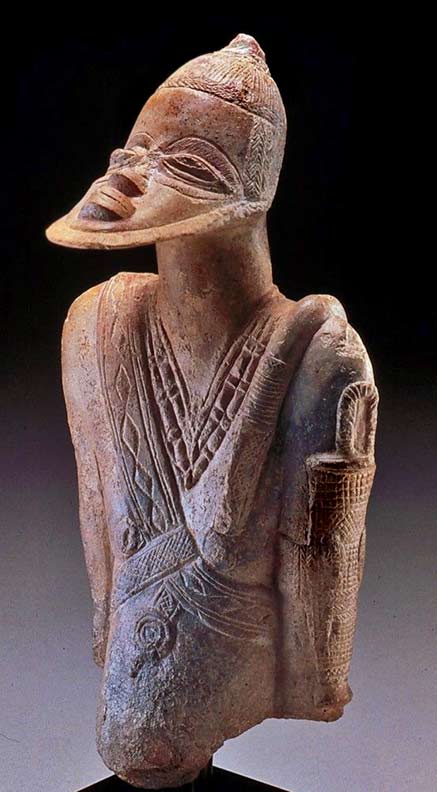
Djenne style sculpture figure, Mali
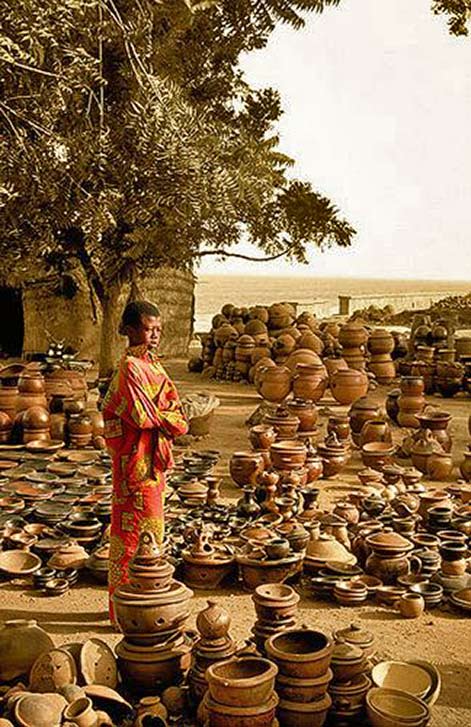
Mali Segou pottery market,
Vicente Méndez, Flickr
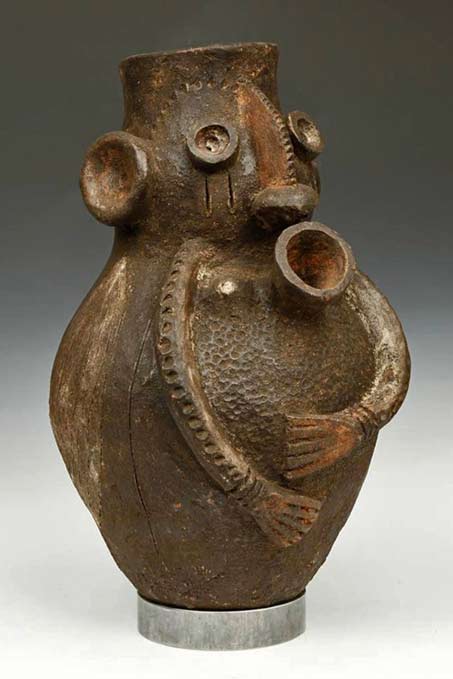
Figure bottle, Mambila, Cameroon
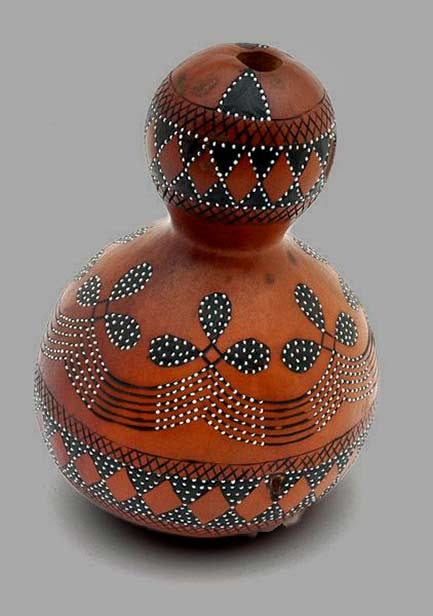
Africa Gourd (calabash) container from the Ronga people of Mozambique
First half of the 20th century Gourd, pigment and white glass beads.
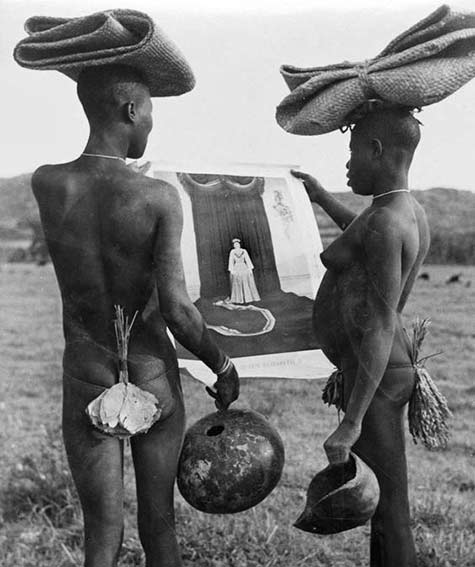
‘The innocent anthropologist’ Notes from a Mud Hut – Nigel Barley
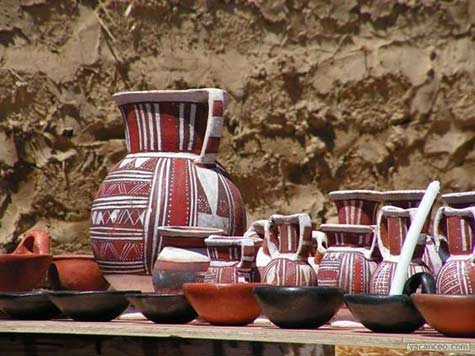
Collection of Nigerian pottery
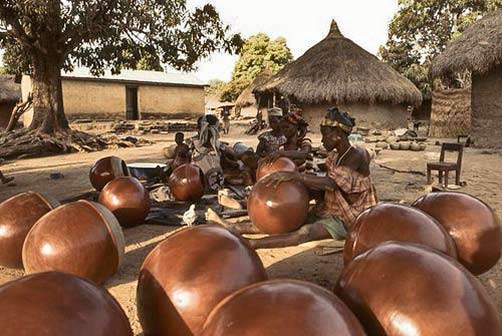
Katiola female potters, Ivory Coast
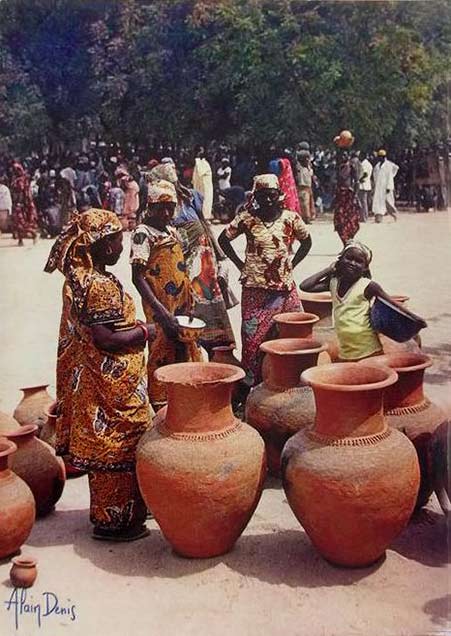
Large terracotta storage pots at the street market, Cameroon
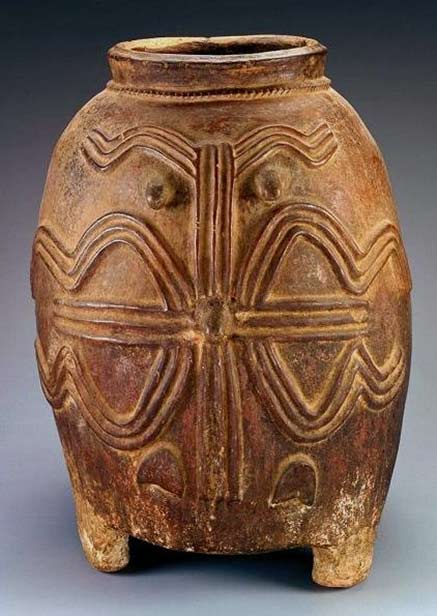
Legged storage Vessel.- Kurumba people, Africa
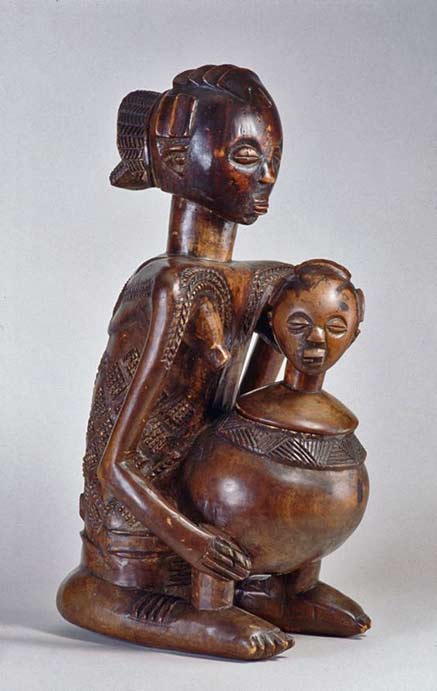
Wood carving – Woman holding a child with a pot form – Republic of Congo
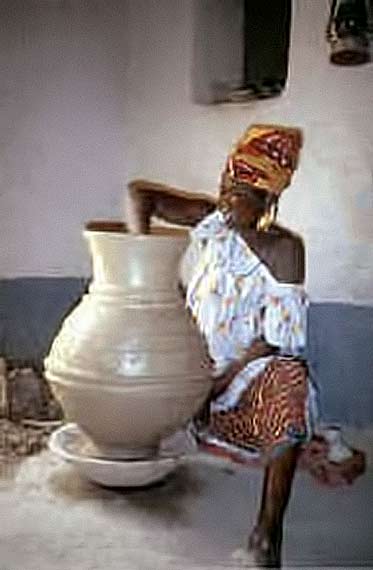
Somono potter Niamoye Nientao finishing a Jidaga (water jar)
Photo Adria Laviolette 1983
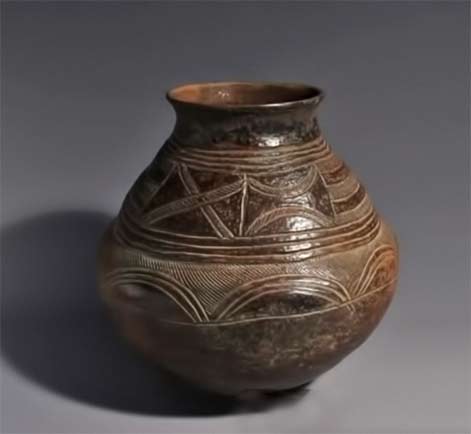
Songye Pot with incised geometric decoration
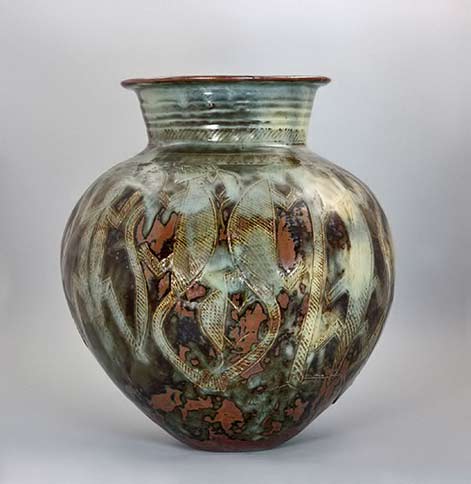
Large water jar – Lady Kwali, Nigeria
1960
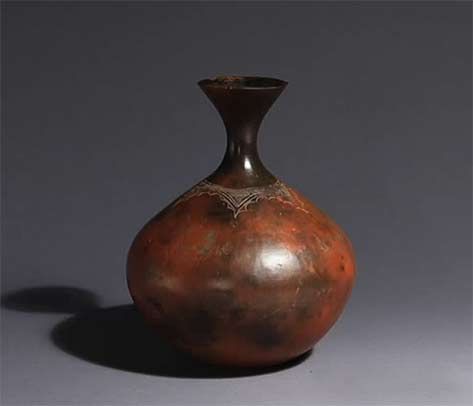
Elegant Tutsi pot with flared neck, Rwanda
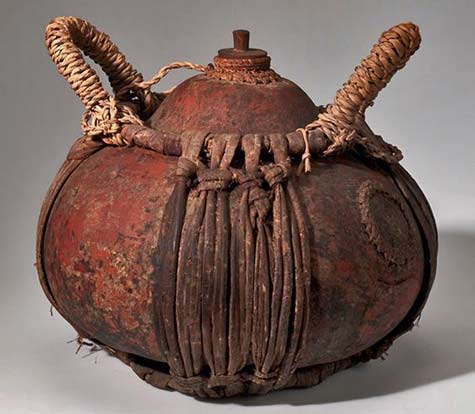
Shabby chic terracotta pottery – Okavango Delta
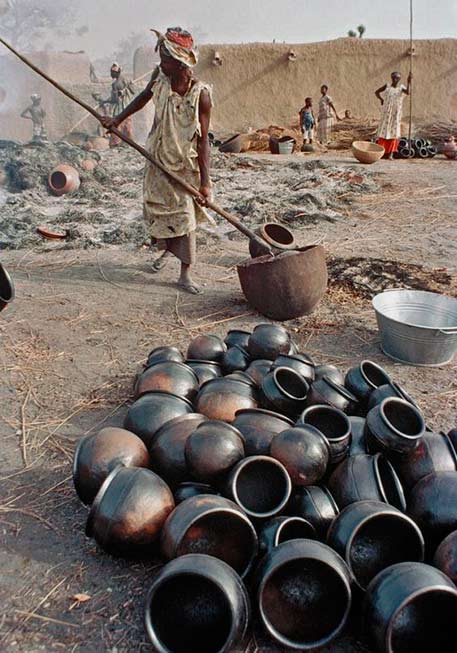
Kalabougou firing pit in Mali
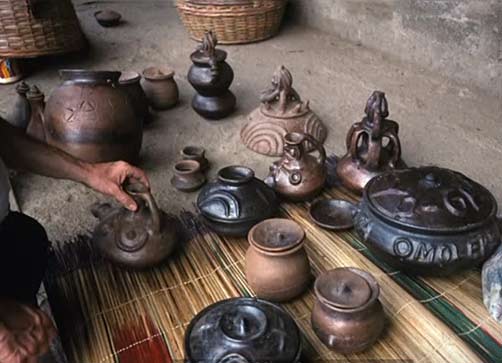
Yoruba pottery selection, Nigeria
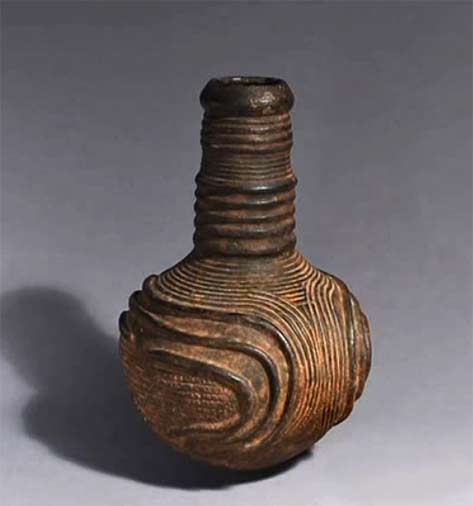
Ceremonial pottery bottle, Zande,Congo
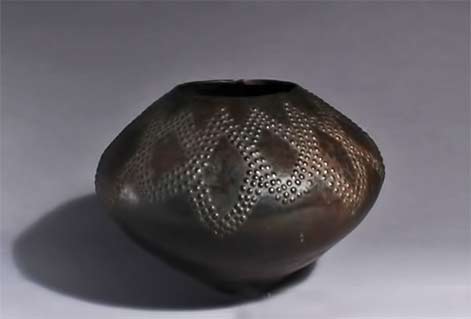
Zulu beer pot
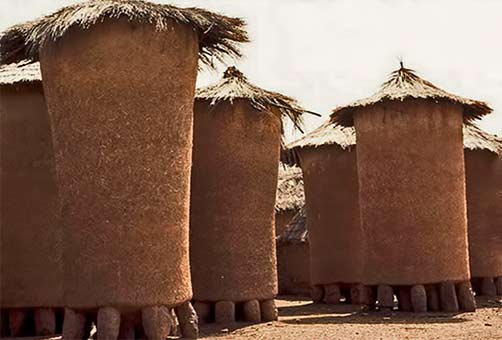
A group of granaries – georges courreges, flickr
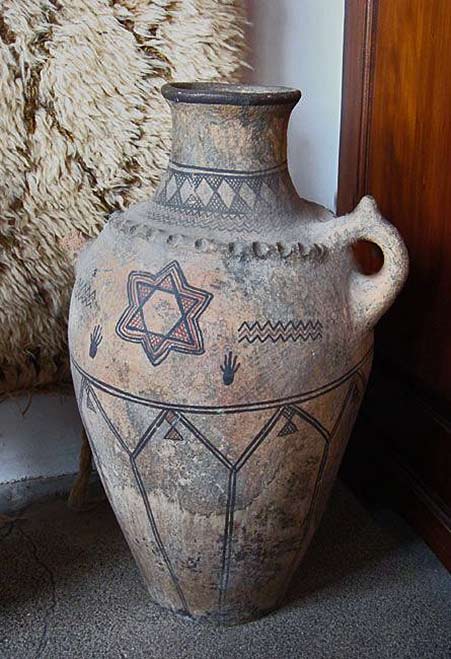
Berber water jar
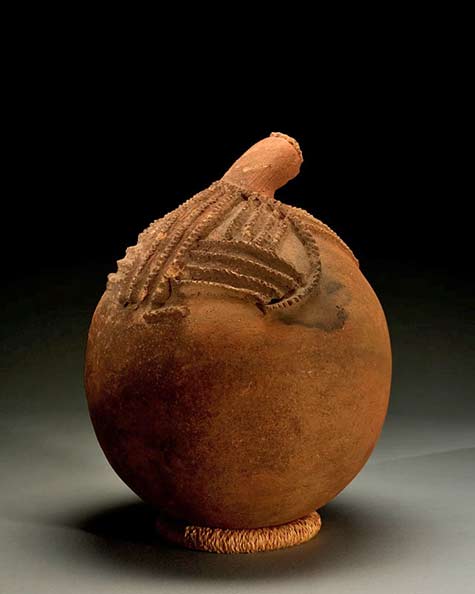
African water jug
The Dick Jemison Tribal Art Collections
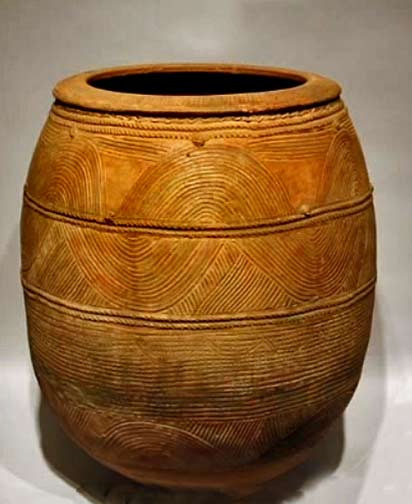
Terracotta pot with incised decorations – Igala Peoples, Nigeria
Sources quoted –
Making clay pots – bushcraft Africa
NEXT POST — Garden fountain sojourn




